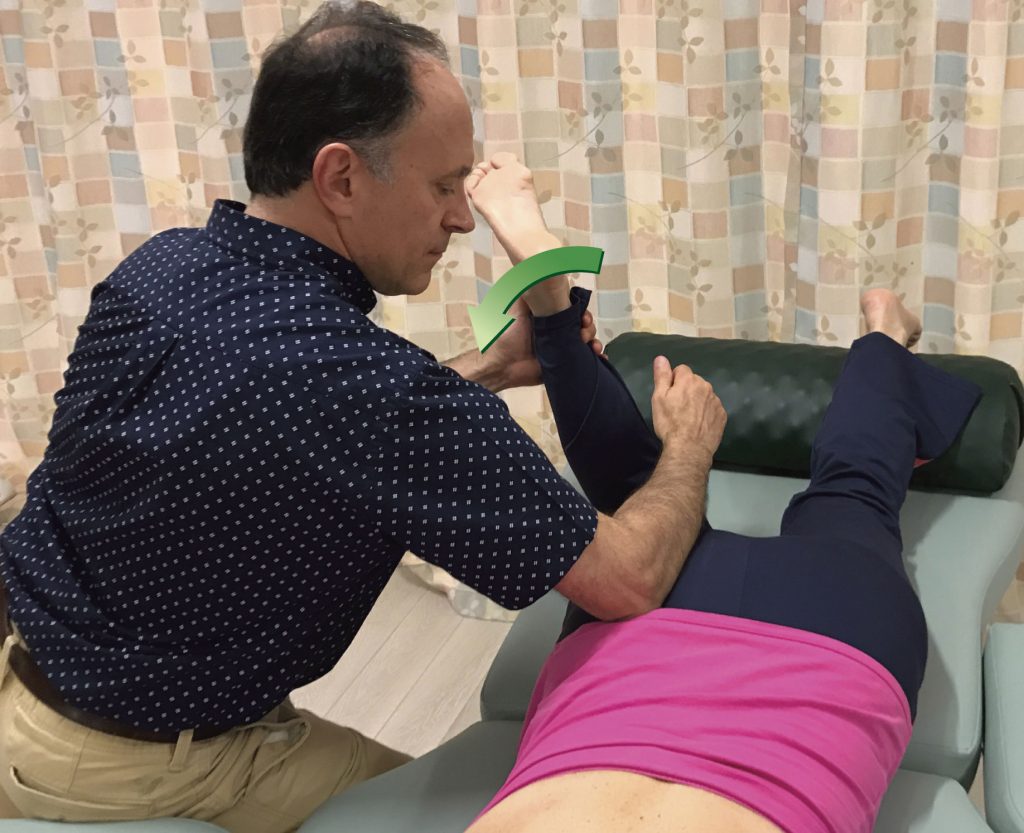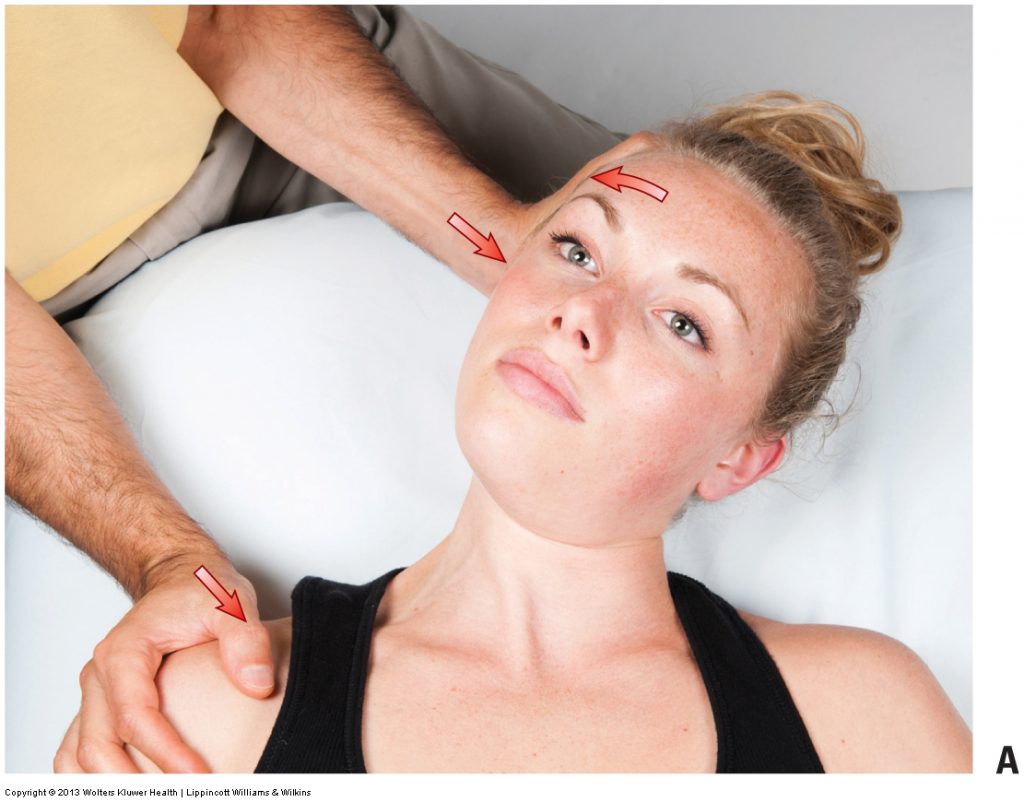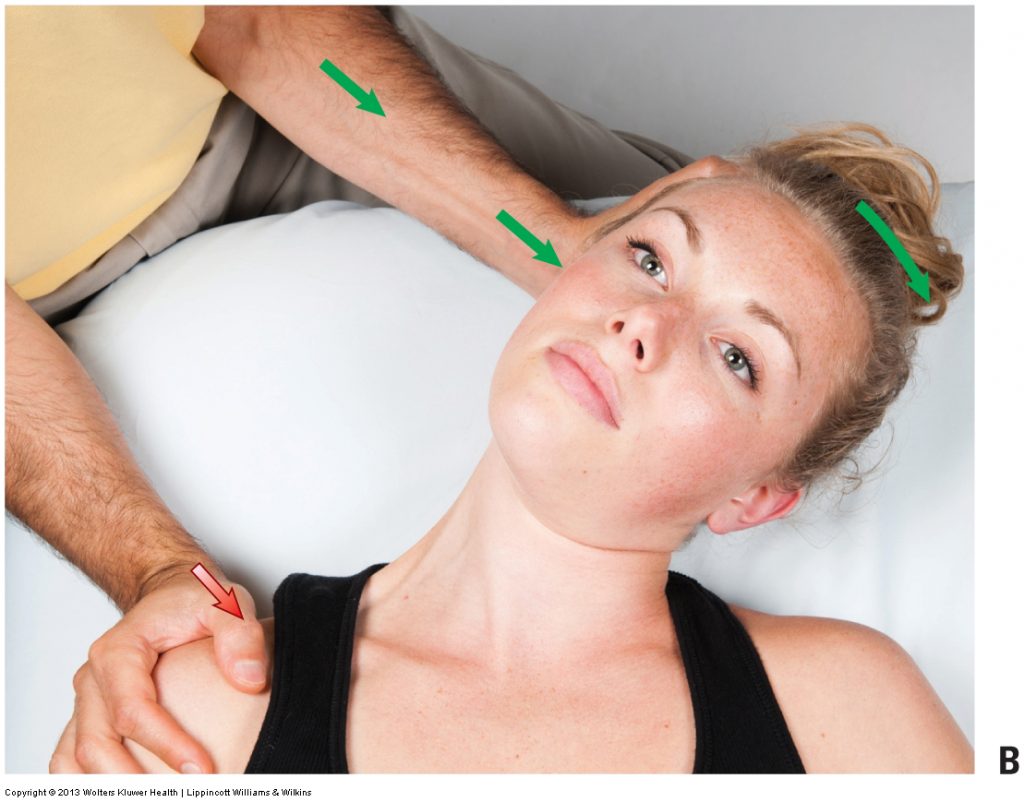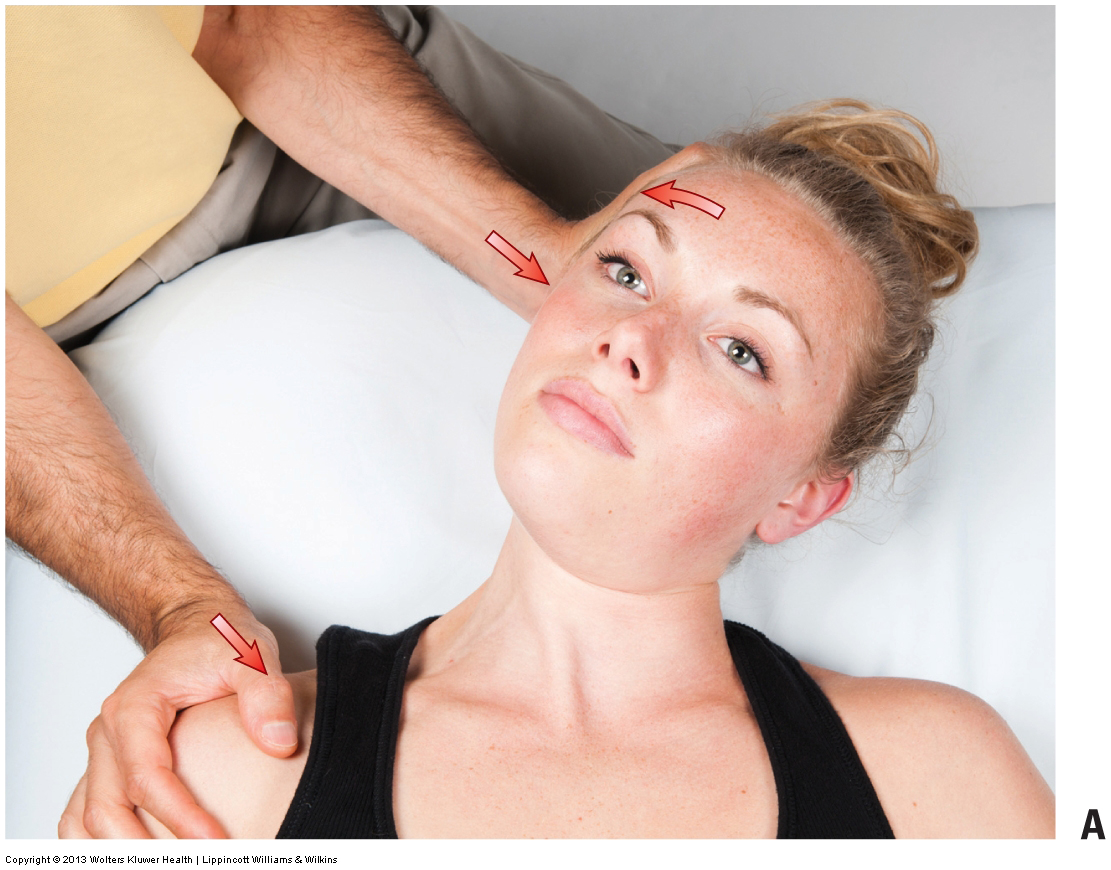Advanced Stretching Techniques

Permission Joseph E. Muscolino. Advanced Treatment Techniques for the Manual Therapist – Neck (2013).
Beyond stretching as a manual/movement therapy technique aimed at mechanically making a soft tissue longer, there are advanced stretching techniques that can be performed. One advanced stretching technique is known as pin and stretch. Neural inhibition can also be added to a stretch by making use of a neurologic reflex that relaxes / inhibits musculature.
Pin and Stretch

Pin and Stretch Technique for the piriformis. Permission Joseph E. Muscolino. Advanced Treatment Techniques for the Manual Therapist – Neck (2013).
- Pin and stretch techniqueis a mechanical stretching technique that focuses the line of tension of the stretch to a specific region of the target muscle (one end or the other end of the target muscle).
- The therapist/instructor places a pin somewhere along the target muscle.
- Then one of the attachments of the target muscle is moved away from the other attachment.
- The force of the stretch is focused along the region of the muscle that is between the pinned point and the attachment that is moved.
Neural inhibition stretching
- Agonist Contract (AC) stretching:
- This technique is also known as Antagonist Contract stretching.
- This technique uses the Reciprocal Inhibition reflex.
- This is the basis for Aaron Mattes’ Active Isolated Stretching (AIS) technique.
- Proprioceptive Neuromuscular Facilitation (PNF) stretching:
- This term is used for stretching techniques that use the Reciprocal Inhibition reflex and/or the Golgi Tendon Organ reflex.
- Contract Relax (CR) stretching:
- This technique uses the Golgi Tendon Organ reflex.
- Post-Isometric Relaxation (PIR) stretching:
- This technique uses the Golgi Tendon Organ reflex.

Contract Relax advanced stretching technique – Step 1: Isometric contraction of the target muscle / musculature. Permission Joseph E. Muscolino. Advanced Treatment Techniques for the Manual Therapist – Neck (2013).

Contract Relax advanced stretching technique for the neck – Step 2: Augmenting the stretch. Permission Joseph E. Muscolino. Advanced Treatment Techniques for the Manual Therapist – Neck (2013).
Neurologic Reflexes
Reciprocal Inhibition (RI) reflex:
- When a muscle contracts, the antagonist musculature is relaxed (inhibited from contracting) so that it can lengthen to allow the joint motion to occur.
Golgi Tendon Organ (GTO) reflex:
- When a muscle contracts sufficiently hard, and pulls on its tendons, the Golgi tendon organ receptors in the tendons are stimulated. This sends a signal into the central nervous system (spinal cord) that then inhibits that muscle (and its synergists) from contracting (relaxes it/them). The idea being that this is a protective reflex that prevents a muscle from contracting so forcefully that it tears its tendon.
Note: Muscle spindle reflex
- The muscle spindle reflex is not a neural inhibition reflex.
- Also known as the stretch reflex.
- When stretching, stimulation of this reflex is to be avoided because it increases muscle tone.
- It is essentially a protective reflex that senses when a muscle is being stretched either too far or too fast, and results in contraction of that muscle.
- For this reason, it is generally not a good idea to stretch quickly or too forcefully.
- Note: Muscle spindle activity also controls baseline muscle tone (“muscle memory”).
(Click here for the blog post article: What is Stretching?)
Digital COMT
Did you know that Digital COMT (Digital Clinical Orthopedic Manual Therapy), Dr. Joe Muscolino’s continuing education video streaming subscription service for massage therapists (and all manual therapists and movement professionals), has at present (October of 2018) more than 1,000 video lessons on manual therapy continuing education, including entire folders on stretching, joint mobilization, and massage. And we add seven (7) new videos lessons each and every week! And nothing ever goes away. There are also folders on Pathomechanics and Anatomy and Physiology, including an entire folder on Cadaver Anatomy… and many, many more on other manual and movement therapy assessment and treatment techniques? Click here for more information.


